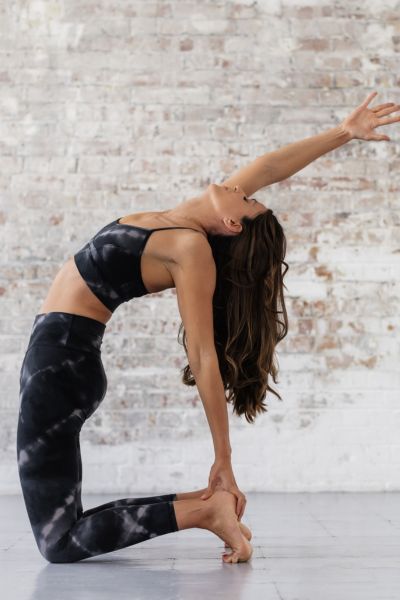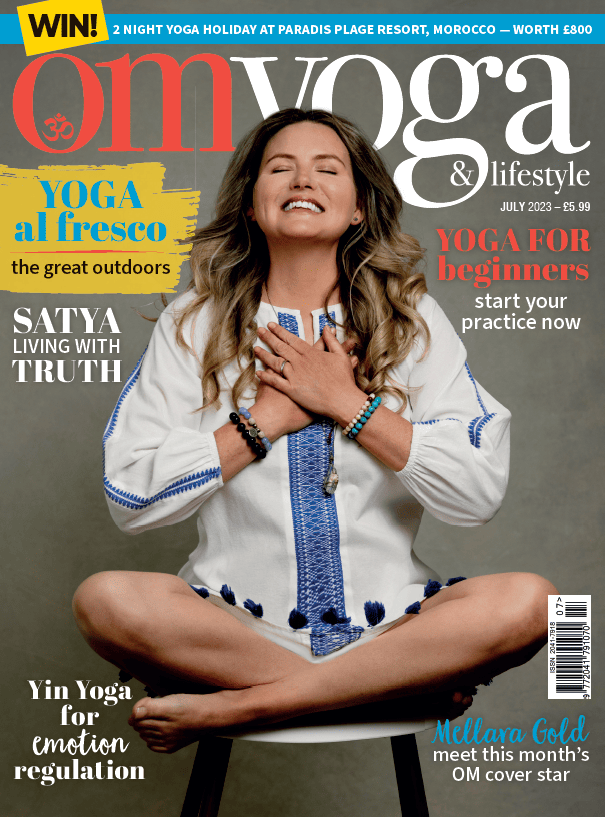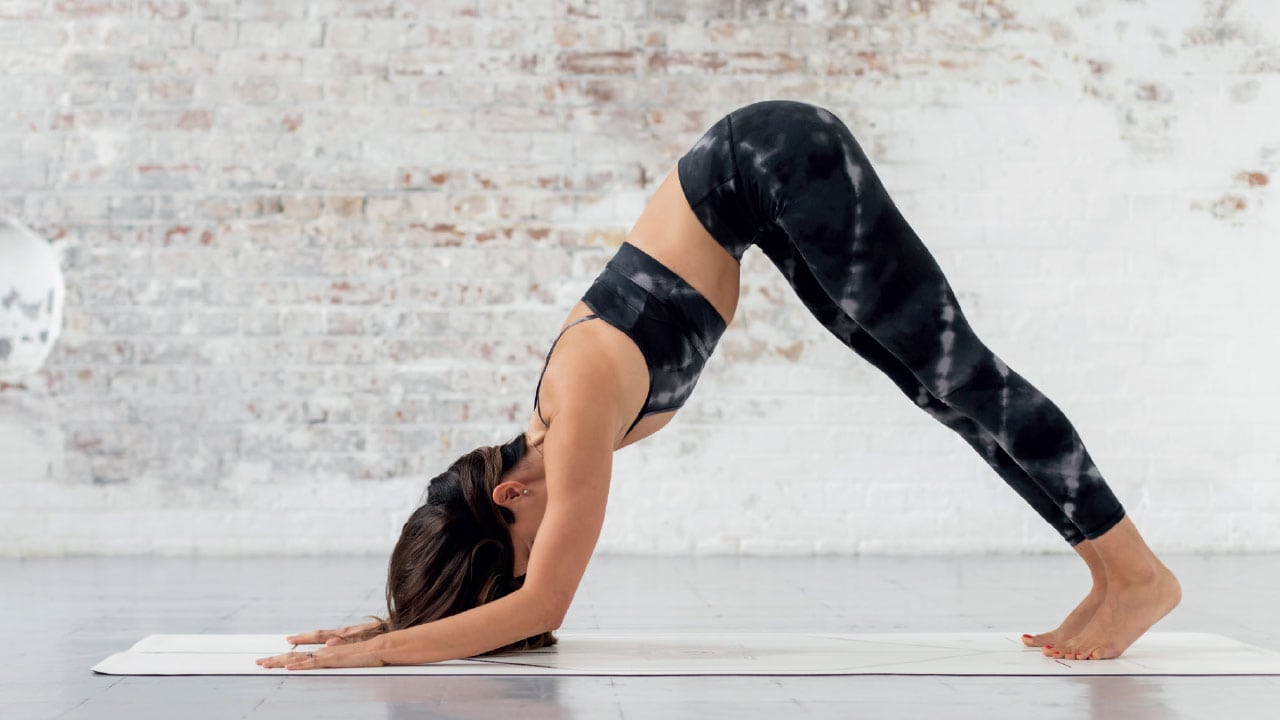
Yoga unpacked: Satya – live with truth
Ever been in a yoga class and not fully understood what the teacher is talking about? Bestselling author and creator of the top-rated Yoga Happy app, Hannah Barrett, is here to help. This month, she is unpacking the yogic concept of Satya
Reading time: 5 minutes
What is satya?
“My thoughts, words and actions will be consistent, honest and full of love.”
Last month we broke down the first of the yamas and the concept of ahimsa, non-violence or love. The yamas are yoga’s ethical backbone — ethical considerations on how to avoid harming ourselves or others. We have the opportunity to practice the yogic philosophy concepts through every interaction we have. The more we practice, the bigger ripple effect they will have sending positive seeds of change for all to follow.
Satya is the next of the yamas and translates to truthfulness. It is present when our thoughts, words and actions are aligned and honest. We need satya and ahimsa to sit side-by-side, as clear and honest communication prevents harm.
We also need to remember this simple reminder based on ancient philosophy:
Is it kind?
Is it true?
Is it necessary?
In this case, let us use the example of my five-year-old daughter Amelie. She comes to me with a picture of a unicorn that resembles more of a purple blob and asks me what I think. If I speak the full truth without kindness I cause her pain. In this case, is it more appropriate to remember the concept of ahimsa and use a softer approach to the truth?
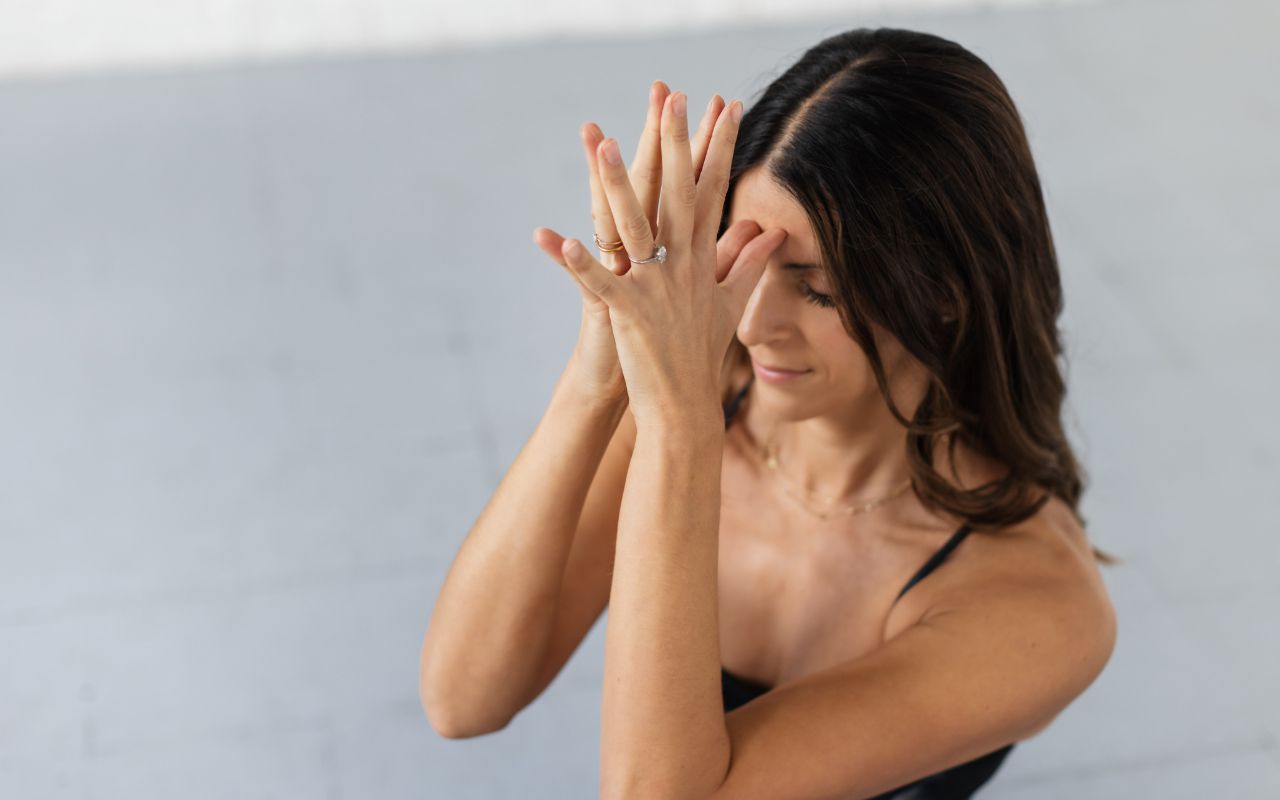
How can we apply it to life now?
The words we speak have a huge impact and hold great power. This doesn’t just relate to speaking to others but speaking to ourselves as well. Let us choose our words carefully and speak with love and truth.
A few examples of how we can practice truthfulness in our daily interactions:
Gossip: it’s addictive and it’s everywhere. Be aware of it, and try to distance yourself from it. Notice how speaking badly of others leaves a bad aftertaste. It lingers with you and doesn’t feel good. Can you instead ask questions, have compassion and an open mind and seek out other sides of the story before jumping to judgement?
Nice vs real: As humans we can be predisposed to want people to like us. It can result in us modelling ourselves into different things for different people, striving for ‘nice’ rather than real. Can you instead aim for realness and remember that it is impossible for everyone to like us.
Heal the inner dialogue: that voice inside you, pay attention to it. Become aware of whether it is sharing opinion or truth. If it’s opinion, take a moment to consider and explore the truth of the situation. Notice how often you allow the words of others, or your own voice or emotions to cloud what is true for you.
Time: ever notice how much we lie to ourselves about time? Maybe it’s how many to-do items we can complete in a day or how long a task will take or even how long we’ve spent scrolling mindlessly on our phones. Time is so valuable, practicing satya and being truthful about how much time we have and what we choose to do with it will make a huge difference to your life.
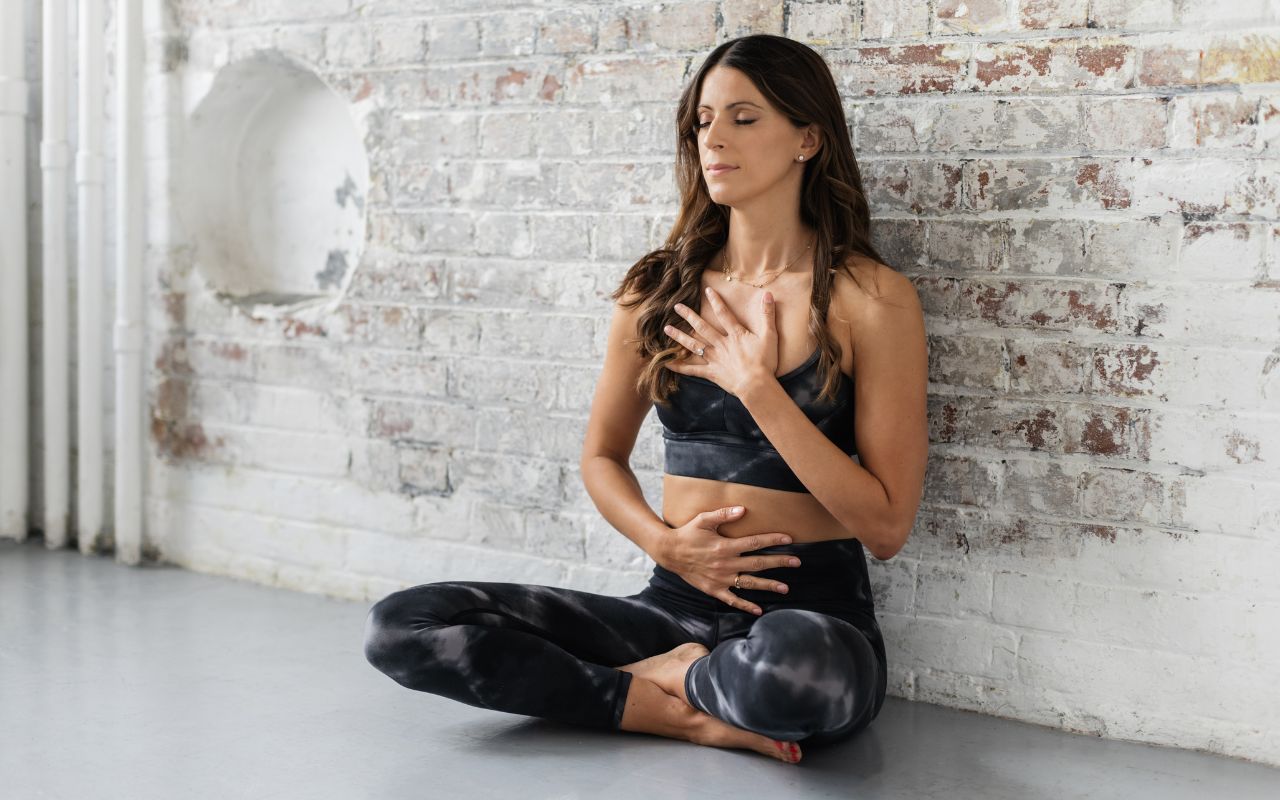
Journal prompts
Yoga helps us connect with our true identity and journalling can be an amazing way to question our beliefs and behaviours and practice self-study.
Some journal prompts relating to satya to reflect on:
- Think of the last time you told a lie, however big or small, or pretended to know something you didn’t. How did that make you feel? What stopped you from telling the truth and can you work on this going forwards?
- What un-truths make a regular occurrence in your thoughts?
- Is it ever okay to tell a lie? Where's the boundary for you?
How can we apply satya onto the yoga mat?
Next time you step onto the yoga mat, notice where you may not be being truthful with yourself and your practice. Firstly, set an intention for your practice which is the truth as to why you are on the mat today.
Then ask yourself, are you pushing yourself too much or too little? Are you ignoring an area of pain, weakness or tightness? Or perhaps you are not modifying poses according to what your body needs. Satya teaches us to be truthful to and listen to our bodies. Whether this is through modifying a pose to allow for wrist pain or by providing that extra challenge when required too.
Pose for satya – Ustrasana
Camel pose can help you open your heart and cultivate compassion, openness, vulnerability and empathy. All are essential in the practice of satya.
- Kneeling on your yoga mat with the knees hip-width apart, the toes can be tucked or untucked. Place a blanket under the knees if you have sensitive knees.
- Place the hands on the sacrum, fingers pointing downwards and find length through the spine.
- Inhale as you lengthen through the side waist, lift the chest and squeeze the shoulder blades together and down. The glutes are engaged to help you bring a uniform curve to the spine.
- Exhale as you continue to lift the chest, gently keeping the chin tucked and extending out through the crown, keeping the spine long.
- Your hands can stay on the sacrum or you can bring them to the heels or onto blocks. The one-armed camel variation I’m showing here is a lovely way to find freedom in the heart space.
- The inner thighs hug in, glutes strong and the shoulder blades firm into the back ribs as you hold and breathe for one to five breaths.
- Inhale to slowly and mindfully come back up. Sit onto your heels with a neutral spine for a moment to notice how it felt in your body.
Strive to incorporate this mindful philosophy in your everyday life. Notice how it slowly but surely has a huge impact on your happiness and freedom — and for others too.
If you want to understand more about Satya, check out Hannah Barrett’s book Yoga Happy and the Yamas and Niyamas series on her app also called Yoga Happy! Find out more at hannahbarrettyoga.com

